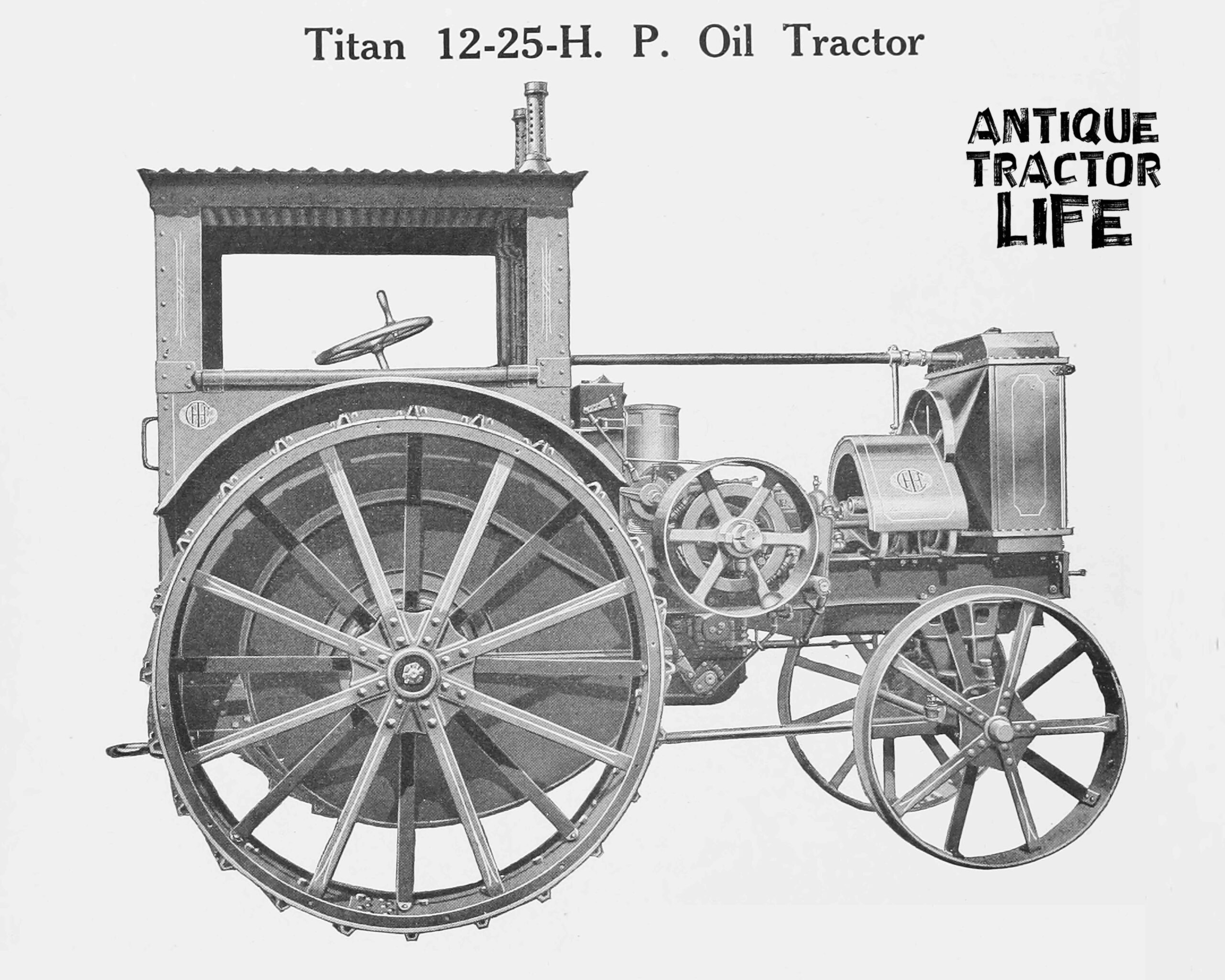
International Harvester manufactured the Titan 12-25 Tractor (later known as Titan 15-30) at its factory in Milwaukee, Wisconsin, USA, from 1914 to 1917.
The tractor is powered by a four cylinder horizontal gasoline-kerosene engine rated at 12 horsepower on the drawbar and 25 horsepower on the belt operating at 575 revolutions per minute. The cylinders have an 4 -1/4 inch bore and 8 inch stroke. Toward the end of production, this tractor was later re-rated to 15-30.
The engine is unique to the tractors with its L-head or flathead design. The intake and exhaust valves are in the cylinder block instead of the cylinder head. This proved a troublesome design and was phased out entirely when International released its successor, the 15-30 Titan.
The transmission has 2 speed forwards and 1 speed reverse. In high gear the tractor has a top speed of 2.4 miles per hour and in low speed, 1.87 miles per hour.
Records indicate that 818 of the 12-25 Titan tractors were built from 1914 to 1917.
The 12-25 Titan tractor came completely equipped and ready to run including; built in friction clutch pulley, (22 inches in diameter with 8 inch face), magneto, oil can, lubricating oil, and necessary tools.
Special accessories included; kerosene headlight, acetylene light, special sized pulley, 4 inch rear wheel extensions, cab curtains and stand lugs can be furnished at extra cost.
The front wheels are 40 inches in diameter with a 7 inch face while the rear drive wheels are 66 inches in diameter with a 14 inch face.
The gasoline tank is hold 6 gallons and the capacity of the kerosene tank is 30 gallons.
Total length of the tractor is 140 ½. inches, total width of the tractor is 85 1/2 inches, height of the tractor is 118 inches and approximate shipping weight 9,580 pounds or 4.8 tons.

About The L-Head or Flathead Engine Design

The design of an L-head or flathead engine is characterized by the placement of its valves and combustion chamber within the engine block, rather than in the cylinder head. Here are the key features of the L-head engine design:
- Valve Placement: In an L-head engine, both the intake and exhaust valves are positioned in the engine block beside the cylinders. This is in contrast to an overhead valve (OHV) engine, where the valves are located in the cylinder head above the combustion chamber.
- Combustion Chamber: The combustion chamber in an L-head engine is part of the engine block and is formed between the cylinder and the top surface of the engine block. The shape of the combustion chamber is often simple, and it resembles the letter “L” when viewed from the side, giving the engine its name.
- Simplicity: The L-head design is known for its simplicity. With fewer moving parts associated with valve mechanisms in the cylinder head, L-head engines are mechanically straightforward, making them easier to manufacture and maintain.
- Cooling: L-head engines typically have good cooling characteristics because the combustion chamber is in direct contact with the engine block, allowing efficient heat dissipation. However, this design may also lead to challenges in optimizing airflow and combustion efficiency.
- Historical Use: L-head engines were commonly used in early automotive applications, as well as in industrial and agricultural machinery. They were popular in the early to mid-20th century but have been largely superseded by more advanced engine designs, such as overhead valve (OHV) and overhead camshaft (OHC) configurations.
While the L-head design offered simplicity and ease of manufacturing, advancements in engine technology have led to the widespread adoption of overhead valve and other designs for improved efficiency, power, and emissions control in modern engines.




0